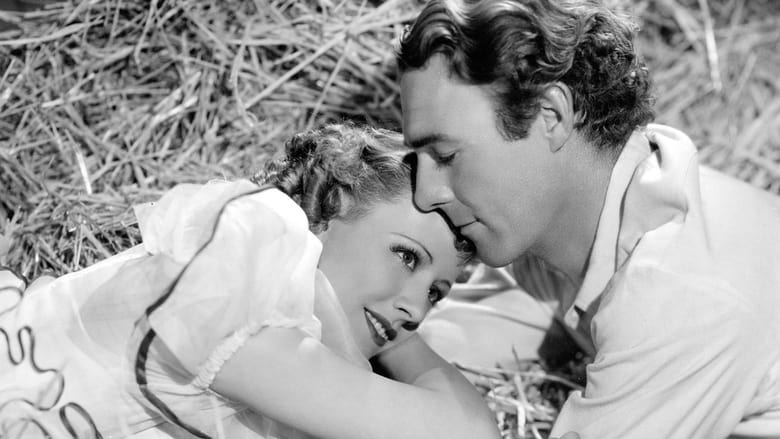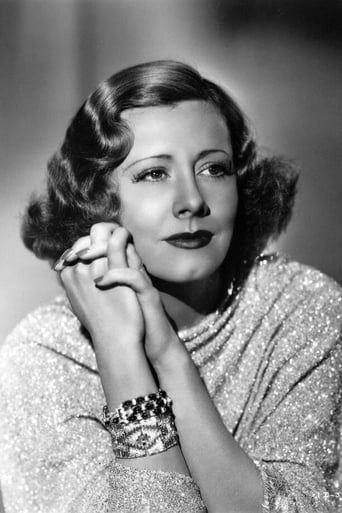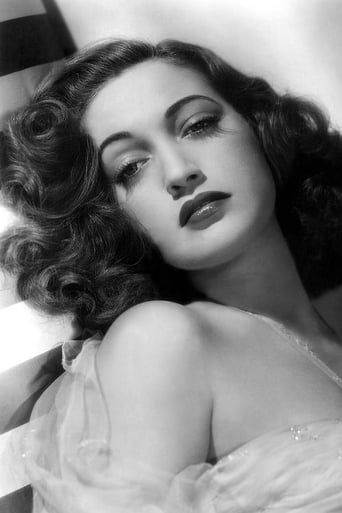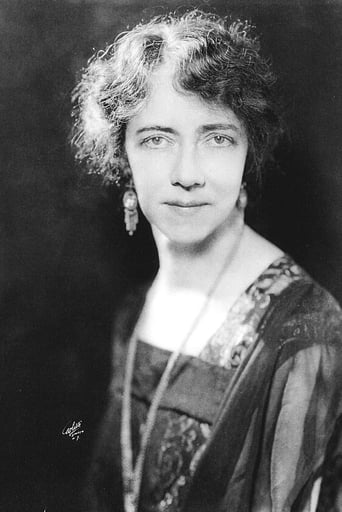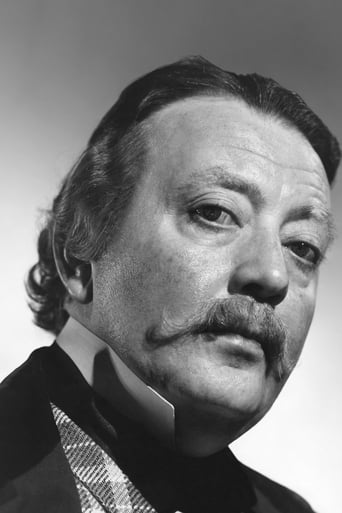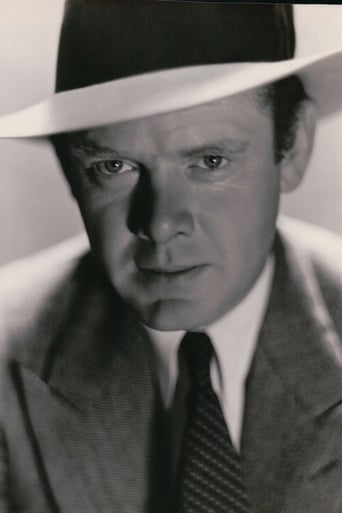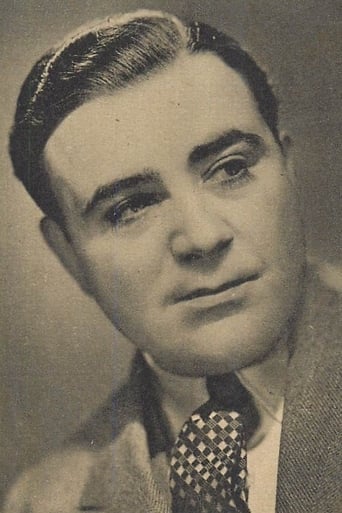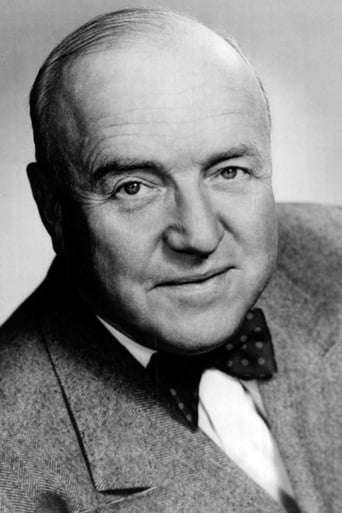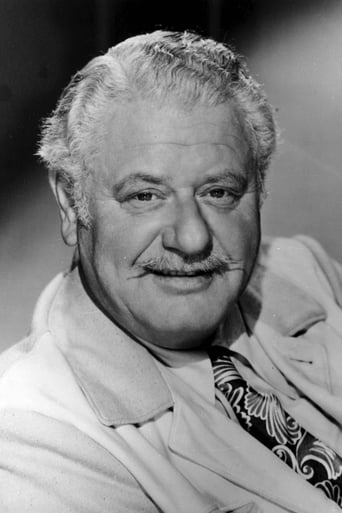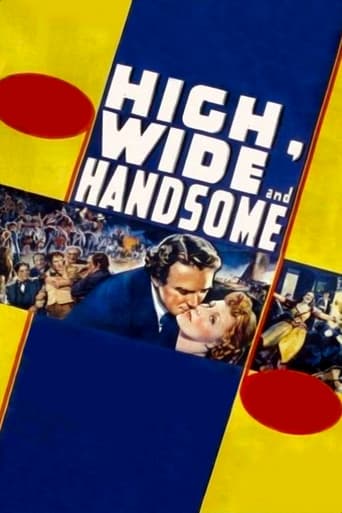
High, Wide and Handsome
July. 21,1937 NRThe setting is a small town in 1870s Pennsylvania. Sally Waterson and her father have stopped in town with their traveling medicine show, but when their wagon catches fire, they find themselves stranded. They're taken in by Mrs. Cortlandt and her grandson, Peter, who is trying to set up a pipeline that will supply oil throughout the state. Sally and Peter soon fall in love and marry. Neither their marriage nor Peter's pipe dreams flow too smoothly.
Similar titles
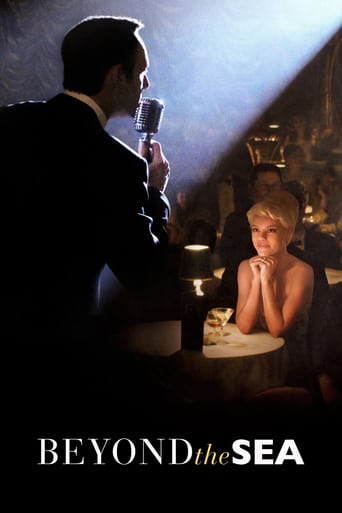
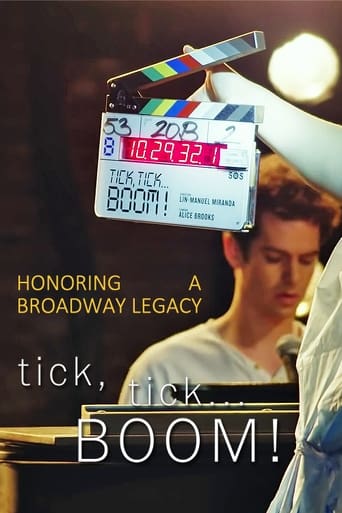
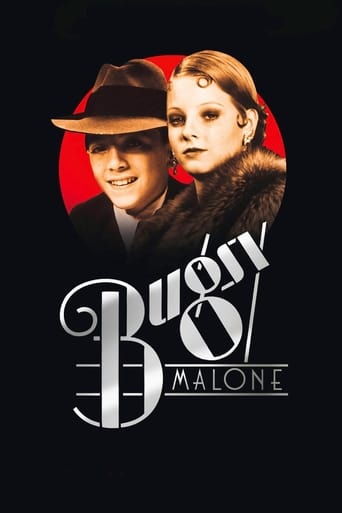
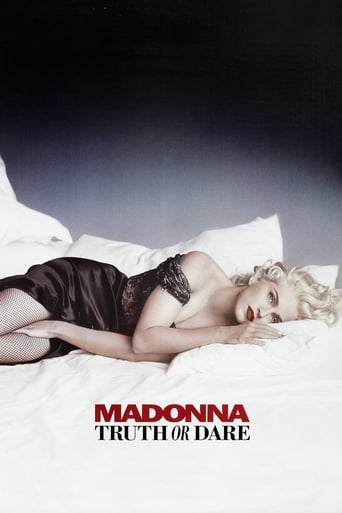
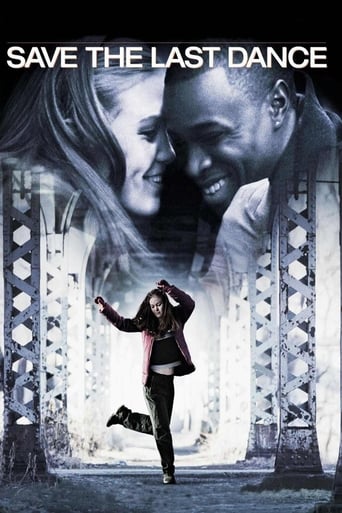
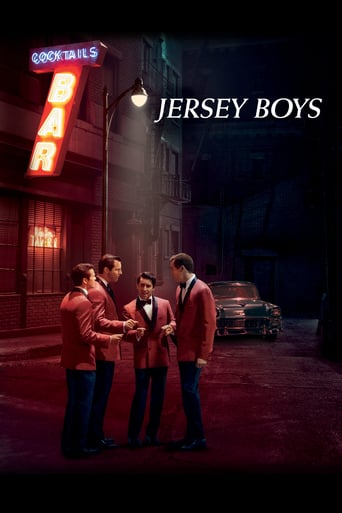

Reviews
Best movie of this year hands down!
Pretty good movie overall. First half was nothing special but it got better as it went along.
Let me be very fair here, this is not the best movie in my opinion. But, this movie is fun, it has purpose and is very enjoyable to watch.
The movie turns out to be a little better than the average. Starting from a romantic formula often seen in the cinema, it ends in the most predictable (and somewhat bland) way.
HIGH HIDE AND HANDSOME is an big expensive Paramount musical directed by Rouben Mamoulian that tries to combine a MGMesque romantic musical production with a Cecil B. DeMille-sized dramatic epic with fairly successful results thanks to a lovely original Oscar Hammerstein III - Jerome Kern score and an excellent cast headed by Irene Dunne, Randolph Scott, Dorothy Lamour, Elizabeth Patterson, Alan Hale, Charles Bickford, Ben Blue, Raymond Walburn, and William Frawley.Irene Dunne stars as a singer/dancer who travels the country as part of pop Raymond Walburn's medicine show. When the medicine show wagon burns up during a stint in Pennslyvania, Dunne, Walburn, and faux Indian entertainer William Frawley are stranded and put up for the night by farmer Randolph Scott and his grandmother Elizabeth Patterson. The trio works their way into Scott and Patterson's heart and stay on as help to earn their keep until Walburn can rebuild an old wagon Scott has given him. Irene and Randolph fall in love and she encourages him with his dream as he drills for oil on the family homestead. When the wagon is built and it's now time to go, the sheepish Scott can't bring himself to propose to Irene but as the wagon leaves and encouraged by grandma, Scott rides off to meet them and fetch Irene back.At their wedding, the oil well hits a gusher and Scott and the local farmers are ecstatic about their potential fortunes. Alas, evil railroad magnate Alan Hale is out to milk them of every penny of profit by excessive fees to ship the oil on his railroad, hoping to make them sellout to him. Scott gets a brainstorm to build a pipeline to move the oil which Hale repeatedly attempts to thwart with his gang. Meanwhile, the Scott-Dunne union is crumbling due to his excessive devotion to the oil wells and when Irene is seen by Randolph singing in a saloon along with her poor friend Dorothy Lamour, a former shanty boat singer whom Irene is trying to help land a job, they have a big fight and Irene leaves to join her father in his current position with a traveling circus. Meanwhile, Hale continues his dastardly plans to ruin Scott's pipe dreams.Irene Dunne is excellent as Sally, the rather elegant medicine show entertainer and Randolph Scott more than holds his own in a superb performance as her dashing bucolic white knight. Irene has several beautiful numbers including the classic "The Folks Who Live on the Hill". Dorothy Lamour is also excellent as the saloon singer who at one point is run out of town by the prudish "good people" of the area and sings the very lovely "The Things I Want". Elizabeth Patterson is always an asset to a movie and has one of her larger film roles here as the tough but loving grandmother and terrific comic support is supplied by William Frawley (who has also has a good song number at the wedding) and Ben Blue.HIGH WIDE AND HANDSOME appears to have been only a modest success at the box office and is one of the least seen Irene Dunne films, as of early 2011 I don't believe it's ever aired on a cable network nor has it ever been released on video or DVD. While not a classic and not without it's flaws (the oil saga with good guys fighting powerful villains has perhaps been done in too many old films and the surprise heroes of the final reel give a rather absurd touch to the climax) it deserves to be seen and it's excellent songs and performances and beautiful set design and cinematography make it a quite memorable movie musical.
Oscar Hammerstein II and Jerome Kern had already made theatre history with "Show Boat," a deathless example of American Theatre, which is still best preserved by Universal's 1935 production, directed by James Whale (now remembered for "Frankenstein"), a wonderful movie that is also the most perfect representation of Irene Dunne, who is amazing in the role of Magnolia. Every time I watch it, I am blown away by the work of the entire cast, which includes many of the staples of the American stage.The following year, Paramount hired Kern and Hammerstein to write them a movie, and indeed, the pair came through, writing some great songs for Dunne to sing, and, on the part of Hammerstein, coming up with a script that can't help but remind the literate of "Oklahoma!" in many ways. It also generated two of Kern's most lovely songs: "Can I Forget You?" and the perennial favorite--of singers if not of audiences--"The Folks Who Live On the Hill".This show is interesting in many ways: one, it takes Dunne back to an earlier time--the 'teens of the twentieth century--in her interpretations, especially of "The Folks Who Live on the Hill," where she elaborately rolls her "r's" and sings in an elaborately formalized manner. It also fails to provide her with an adequate male singing lead, which she certainly had in Allan Jones with "Show Boat."The story presages the ideas that Hammerstein brought to full bloom in his other masterpiece, "Oklahoma" (Masterpiece number one being "Show Boat".) The archetypes are all there: Irene Dunne as Laurie/Magnolia, Randy Scott as Curly (not the weak male lead required by Edna Ferber), Dorothy Lamour as a somewhat muted Ado Annie/Queenie, Charles Bickford as Jud/Frank, Dorothy Patterson as a peppy Aunt Eller/Parthy, Raymond Walburn as a textually removed but otherwise enjoyable Ali Hakim/Captain Andy (although what could go wrong with Charles Winninger in that role?). Add to that Alan Hale as the supremely evil railroad magnate--any comparison would be a stretch, and this is a perfect example of playing against type for Hale, the consummate cheerful sidekick--and you have a delightful Hollywood ensemble company, and I have neglected to mention the beloved Ben Blue, who probably parallels Rubber Face/Will Parker.Talk to me sometime about my ideas anent archetypes: it's for sure--at least as far as I'm concerned--that Hammerstein had some definite "slots" in his scripts not only for particular actors but also for particular characters, and you can find them in subsequent hits like "South Pacific" and "The Sound of Music."My print of "High, Wide and Handsome" was evidently videotaped off a television broadcast: the result is a posterized version whose commercial breaks were edited out; nonetheless, it is a pretty good representation of the film; I don't think that much was missing. Rouben Mamoulian, one of the great directors of film ("Love Me Tonight") and Broadway ("Carousel," need I say more?) added many of his signature effects to this movie, which also may have had some influence from John Ford, but the latter is something I'm flashing on, and I'm not sure what! Please see this sui generis film: it's not a copy of a Broadway hit; it was designed, as were many of Mamoulian's productions, as a film to be appreciated on its own.Paramount should re-release this movie, in the most pristine version available. There are aspects of it that are antiquated, especially since two years later Hollywood brought us "Gone With the Wind" and "The Wizard of Oz," with all their technical accomplishments; but as a musical film achievement, there is a distinctive place for "High, Wide, and Handsome."
High, Wide, and Handsome is a forgotten gem of a movie from 1937. Jermone Kern and Oscar Hammerstein created this sprawling musical adventure for the screen following the popularity of the 1936 film version of their musical, Show Boat, which also starred the great Irene Dunne.Here Dunne plays a singer in a traveling snake oil show run by her father (Raymond Walburn). They bottle "rock oil" and sell it as an elixir. Dunne sings and dances in the show while daddy hawks the tonic. William Frawley plays a fake Indian who is also part of the show. After their wagon burns down, they are taken in by a local farmer (Randolph Scott) and his grandmother (Elizabeth Patterson). Of course Scott and Dunne fall in love, but Scott is sidetracked by his ideas for drilling for oil in 1850s Pennsylvania.Songs, romance, and action combine to make this an unusual film as the couple battles the local bible thumpers as well as the crooked railroad men, led by Alan Hale. Along the way Dunne rescues a saloon singer (Dorothy Lamour) and runs away with a traveling circus. They pack a lot of story into this 112-minute film.Dunne is, as always, a total pleasure to watch. She gets to sing almost all the songs in this musical (Scott never sings) and duets with Lamour on "Allegheny Al." The best song is the wonderful "The Folks Who Live on the Hill," which Dunne sings in closeup with a gentle breeze rustling apple blossoms and her lace bonnet. Scott is good in a role usually played by Joel McCrea, but Scott and Dunne have good chemistry. They also worked together in Roberta and My Favorite Wife. Supporting cast is fine, headed by Patterson as the feisty grandmother, Walburn as the father, Frawley as the Indian (he also gets a number), Ben Blue as a mute, Lamour as the dumb-cluck who sings "The Things I Want" in fabulous close-up, Hale as the corrupt railroad man, Helen Lowell as a gossip, Irving Pichel as the bible thumper, and Akim Tamiroff as the saloon owner. Also of note is Charles Bickford is the bully. Bickford had starred with Dunne is the previous No Other Woman. Worth looking for.
HIGH, WIDE AND HANDSOME (Paramount, 1937), directed by Rouben Mamoulian, is an underrated musical-drama set in the great outdoors of old Pennsylvania, circa the 1850s. Done in elaborate style, it stars Irene Dunne, following her recent success to the 1936 screen version of SHOW BOAT (Universal). Currently riding high and wide with her brief cinematic period in movie musicals (1935-1938) before focusing more on comedy and dramas, Dunne is cast opposite the tall and rugged Randolph Scott for the second time, the first being ROBERTA (RKO Radio, 1935) opposite Fred Astaire and Ginger Rogers. With a handful of contemporary song and dance, college, and backstage musicals hitting the theaters during this period, HIGH, WIDE AND HANDSOME (is the title pertaining to Randolph Scott or the scenery of old Pennsylvania?) takes a different turn in locale, combining outdoorsy western scenery with songs that has been said to have been an inspiration to the highly popular Rodgers and Hammerstein Broadway 1943 musical, OKLAHOMA, and others like it.The story begins with Sally Watterson (Irene Dunne), a young girl traveling with her medicine sideshow father named "Doc" (Raymond Walburn), singing the title song as they settle in a western Pennsylvania town. As "Doc" tries selling some medicine bottles to his patrons, which proves to be a fraud by spectator Peter Cortlandt (Randolph Scott), a fight ensues amongst the crowd, damaging their wagon. Being given the hospitality of her home by Peter's grandmother (Elizabeth Patterson), the stranded Sally earns her keep by helping with the farm animals, and soon gets to know and love Peter, a rugged oil prospector, whom she eventually marries. Their marriage, at first, is a happy union, until Peter neglects his wife in favor of keeping his promise with the neighboring farmers by banding together in laying oil pipelines in order to prevent Red Scanlon (Charles Bickford), a corrupt railroad president, from monopolizing the industry. After Sally is found entertaining on top of the table in the barroom with Molly (Dorothy Lamour), a saloon girl she and Peter had earlier rescued from a lynch mob, the couple find themselves in an argument which sends Sally to leave her husband and return to life entertaining in the passing circus show and to her father, while Peter tries to fulfill his pipeline dream, which, at the present time, proves to be more important than trying to find Sally and resolve matters. The elaborate and well staged sequence with thousands of prospectors racing against time to get the gigantic oil pipeline finished on schedule is almost similar to King Vidor's conclusion of OUR DAILY BREAD (1934) where the farmhands are seen rushing to ditch a waterway in order to save their dying crops, but with this production, an added bonus of rugged fighting scenes and one near miss scene adding to the suspense in which the unconscious Scott is nearly crushed by a falling pipe that lands inches from his head. Whew!Almost forgotten today and rarely seen in recent years, HIGH, WIDE AND HANDSOME has its share of good tunes, with music and lyrics by Oscar Hammerstein II and Jerome Kern, including: "High, Wide and Handsome," "The Simple Maiden," "Can I Forget You?" (all sung by Irene Dunne); "Will You Marry Me Tomorrow, Maria?" (sung by William Frawley); "The Folks Who Live on the Hill" (sung by Irene Dunne); "The Things I Want" (sung by Dorothy Lamour); "Allegheny Al" (sung by Dunne and Lamour) and "Can I Forget You?" (reprise by Dunne). Of the songs, "The Folks Who Live on the Hill," sung by Irene Dunne wearing her old-fashioned wedding gown, comes off best and memorably, as she sings it to her new husband, Peter (Scott) after showing her the dwelling they are to live. Another memorable moment is seeing William Frawley (years before his "I Love Lucy" TV series days in the 1950s) in full voice singing "Will You Marry Me Tomorrow" during a ceremony. While Irene Dunne is no Jeanette MacDonald or Grace Moore when it comes to vocalizing, many forget how well she singing delivery is, and she does it quite well, but unfortunately, on the whole, the songs did not become as immortal as the other Hammerstein and Kern scores.In the supporting cast are Alan Hale as Walt Brennan, the head of the transportation syndicate; Akim Tamiroff as the foreign gambler, Joe Varese; Irving Pichel as Mr. Stark; Lucien Littlefield, Purnell B. Pratt, and some light "comedy relief" supplied by Ben Blue playing Zeke, a hired hand. Raymond Walburn, a fine character actor appearing here as Irene Dunne's father, performs his task well, almost as if this role were intended with W.C. Fields in mind, especially with similarities in his medicine show man who tries to defraud his public with phony medicine bottles, etc.Running ten minutes short of two hours, HIGH, WIDE AND HANDSOME is entertaining, quite original for its time, but sadly, a neglected item. A lot of effort went into this nostalgic production, and it shows. The only thing missing, and a real oversight, is Technicolor. Around this time, Paramount produced some fine Technicolor outdoors films, notably THE TRAIL OF THE LONESOME PINE (1936) with Sylvia Sidney, and EBB TIDE (1937) with Frances Farmer. How cinematic this handsome film would have looked in color. But overlooking this minor flaw, it's a movie worth seeing through once, and after its THE END title and list of actors and their roles (and underscoring to "The Folks Who Live on the Hill") before the final fadeout, it may make one wonder why this is among the rarely-seen western-type musicals gems of the "golden age of Hollywood" period. (***1/2)
Top Streaming Movies











